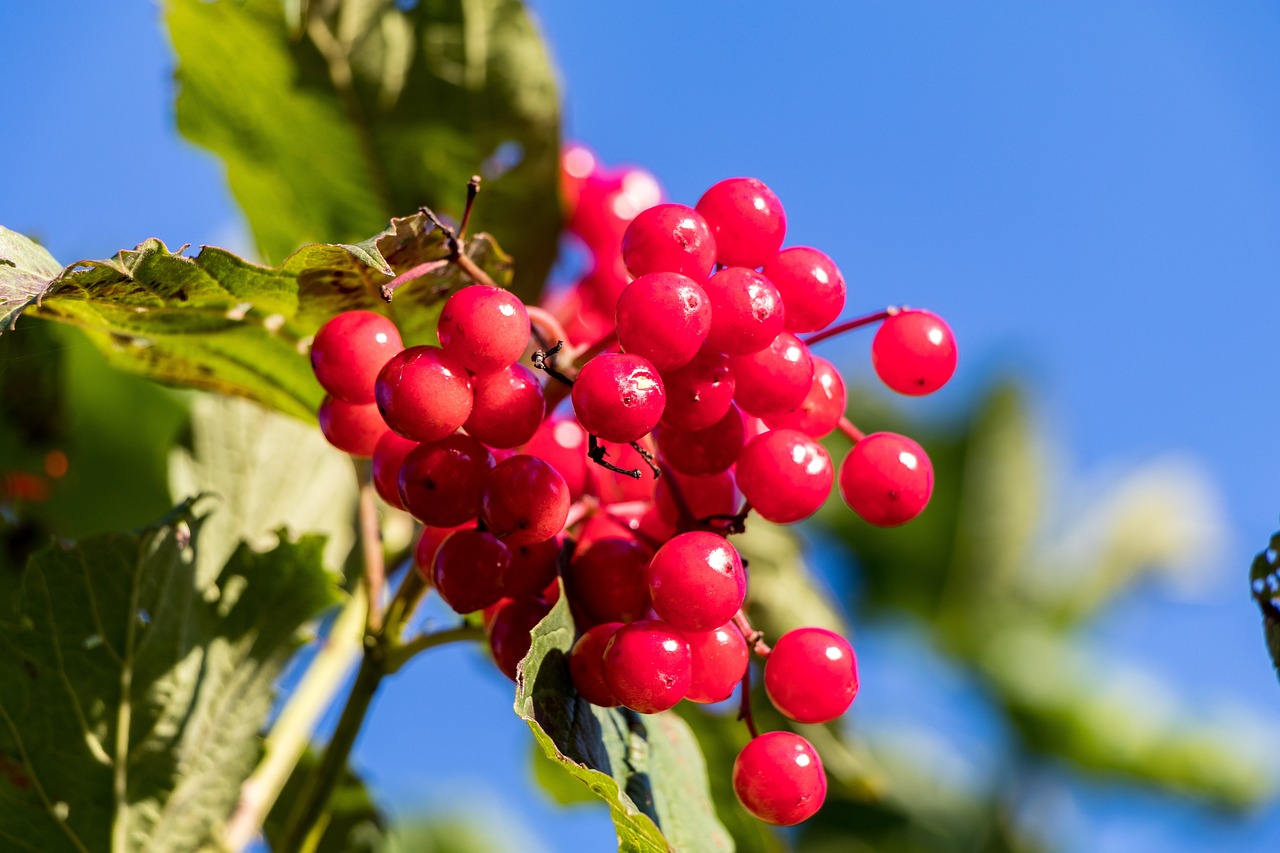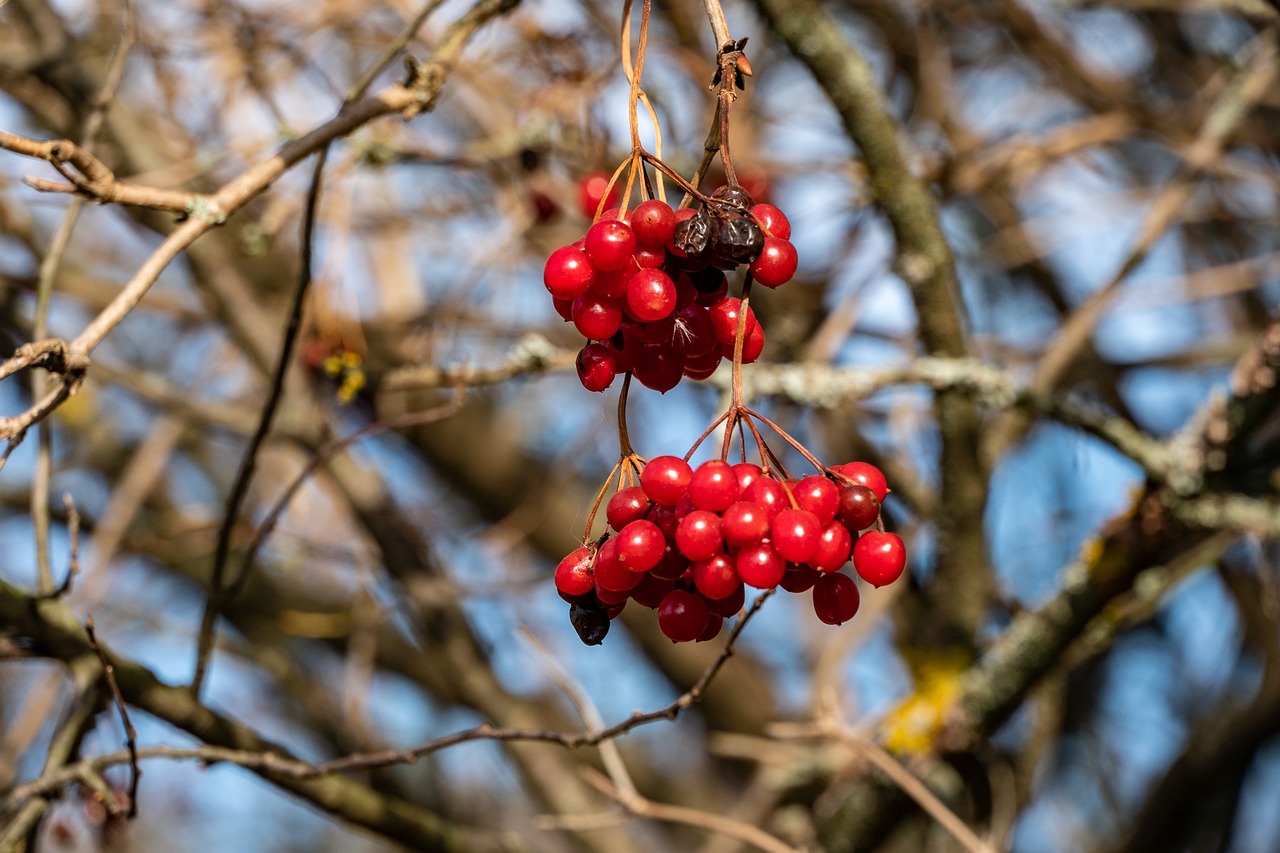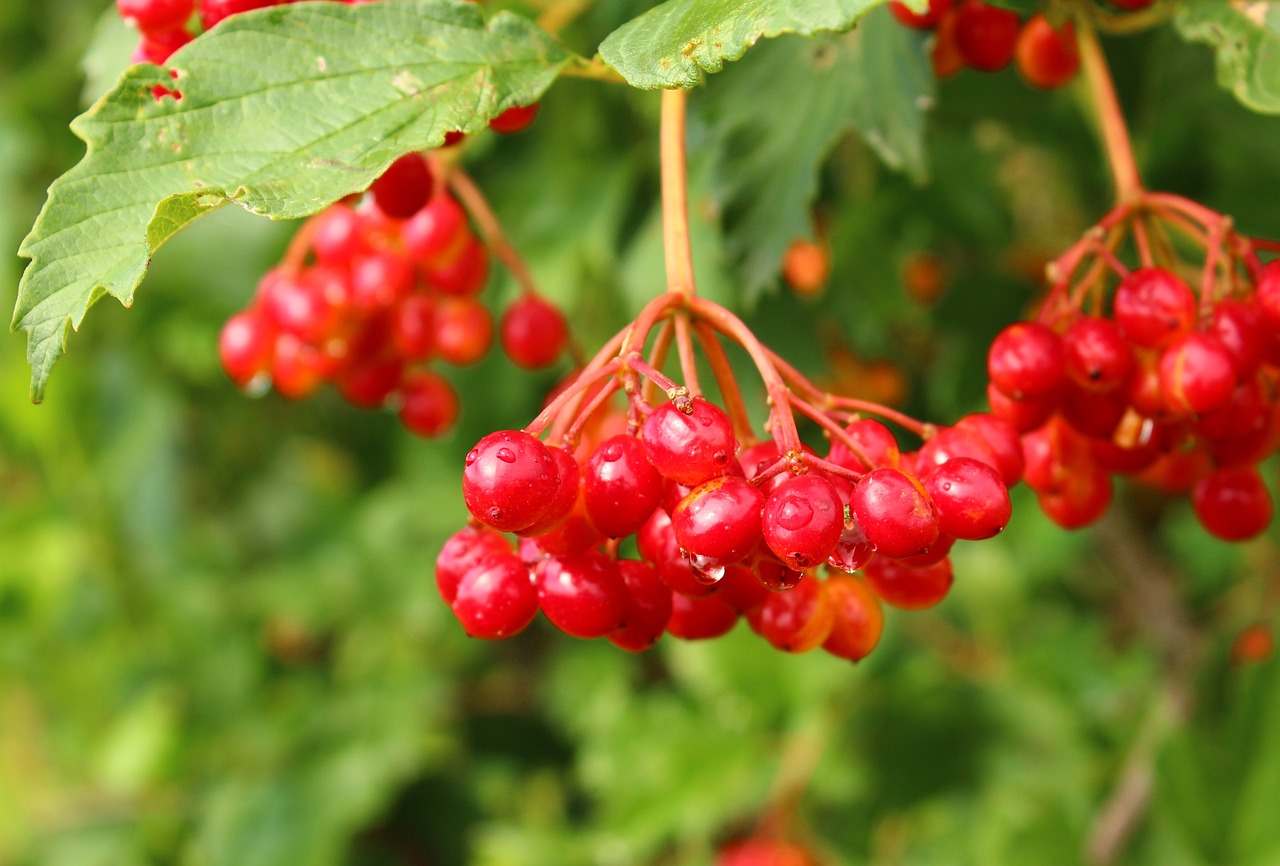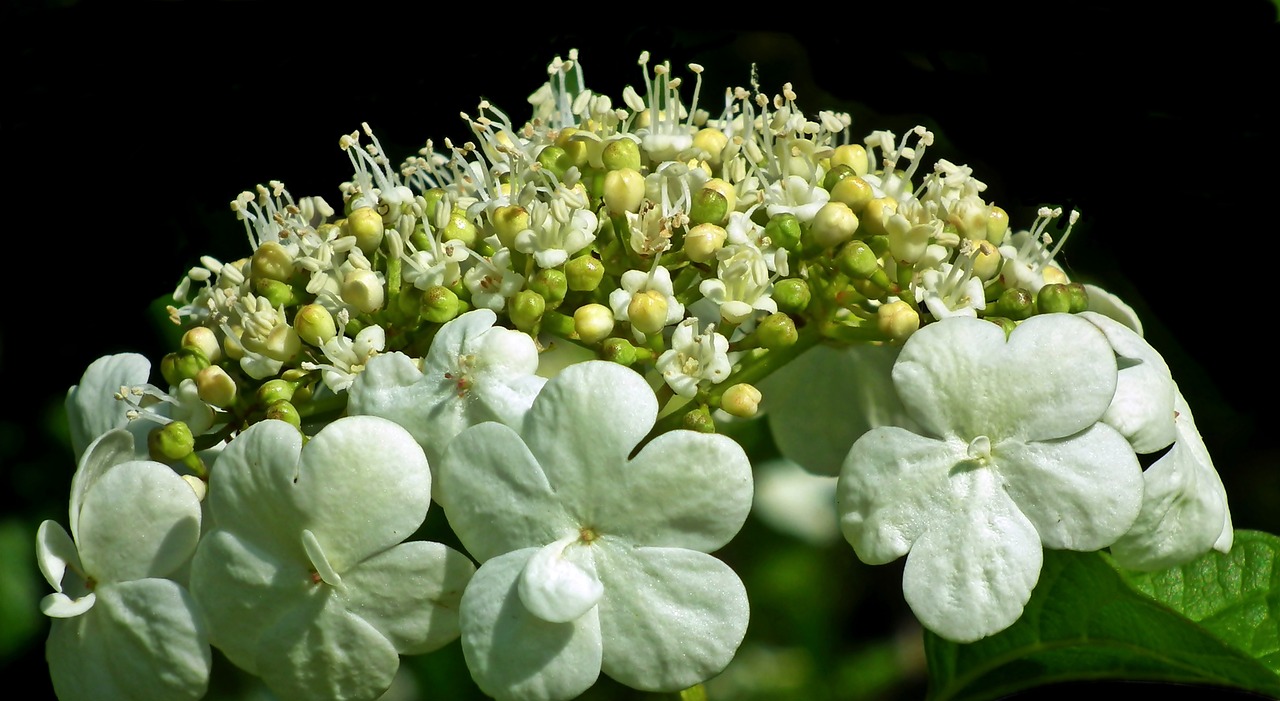Planting and Growing Viburnum
Welcome to the wonderful world of viburnum! If you're looking to add some flair to your garden, these stunning shrubs are a fantastic choice. With their lush foliage, beautiful flowers, and vibrant berries, viburnum plants can transform any outdoor space into a breathtaking sanctuary. In this article, we'll dive into the essential aspects of planting and growing viburnum, ensuring you have all the knowledge needed to cultivate healthy and vibrant plants. So, whether you're a seasoned gardener or a curious beginner, let's get started on this green adventure!
With so many viburnum species available, picking the right one for your garden can feel like searching for a needle in a haystack. But don't worry; we're here to help! Selecting the right variety hinges on your climate and available space. Some popular types include:
- Viburnum opulus (European Cranberrybush) - Known for its stunning white flowers and bright red berries.
- Viburnum plicatum (Japanese Snowball) - Features unique layered branches and large, showy flower clusters.
- Viburnum tinus (Laurustinus) - A hardy evergreen variety that blooms in winter, offering year-round interest.
Understanding the unique characteristics of each type will help you make an informed decision, ensuring your viburnum thrives in its new home.
To set your viburnum up for success, it's essential to understand the ideal planting conditions. Viburnum generally prefers well-draining soil and a good amount of sunlight. Most varieties thrive in full sun to partial shade, so consider your garden's layout when choosing a spot. Additionally, proper spacing is crucial; allow at least 3 to 6 feet between plants to ensure they have room to grow and flourish.
Proper soil preparation is like laying the foundation for a house—it’s essential for plant health. Start by testing your soil to check its texture and nutrient content. You can amend the soil with organic matter, such as compost or well-rotted manure, to enhance its fertility. This will not only improve nutrient availability but also help with drainage, which is vital for viburnum's root health.
Did you know that viburnum prefers a slightly acidic to neutral pH? Testing your soil pH is a straightforward process and can be done using a simple soil test kit. If your soil is too acidic or alkaline, you can adjust it using amendments like lime (to raise pH) or sulfur (to lower pH). Keeping your viburnum's pH in check is crucial for its overall health and growth.
Good drainage is essential to prevent root rot, which can be a real killer for your viburnum. If your soil tends to retain water, consider incorporating organic matter or building raised beds to improve drainage. Raised beds not only enhance drainage but also provide better soil warmth, giving your plants a head start in the growing season.
Watering and fertilization are like the fuel that keeps your viburnum growing strong. When planting, give your viburnum a deep soak to help establish its roots. After that, aim for consistent moisture, especially during dry spells. A good rule of thumb is to water deeply once a week, allowing the top inch of soil to dry out between waterings. As for fertilization, a balanced, slow-release fertilizer applied in early spring will provide the nutrients your viburnum needs to thrive.
Like any plant, viburnum can be susceptible to pests and diseases. However, with a little vigilance, you can keep your plants healthy and thriving. Common pests include aphids and scale insects, which can be managed with insecticidal soap or neem oil. Additionally, keeping your plants well-watered and mulched can help prevent diseases like powdery mildew.
Recognizing common pests is vital for effective management. Look out for:
- Aphids - Small, soft-bodied insects that can cluster on new growth.
- Scale Insects - Hard, shell-like pests that attach themselves to stems and leaves.
- Spider Mites - Tiny pests that cause stippling on leaves and can create webbing.
Prompt identification can make all the difference in keeping your viburnum healthy.
Implementing preventative measures is key to reducing pest and disease issues. Practices such as regular pruning help improve air circulation and sunlight penetration, making your plants less susceptible to problems. Additionally, consider using organic treatments, like insecticidal soap or neem oil, to keep pests at bay without harming beneficial insects.
Q: How often should I water my viburnum?
A: Water deeply once a week, allowing the top inch of soil to dry out between waterings.
Q: What is the best time to plant viburnum?
A: Early spring or fall is the best time to plant viburnum.
Q: How can I tell if my viburnum is getting too much water?
A: Yellowing leaves and root rot are signs of overwatering.

Choosing the Right Viburnum Variety
When it comes to planting viburnum, the first step is to choose the right variety that suits your garden's climate and space. With over 150 species of viburnum, each with its own unique characteristics, it can be overwhelming to make a decision. However, understanding your specific needs and the conditions of your garden can help narrow down your options significantly.
For instance, if you're looking for a viburnum that offers stunning flowers in spring, consider the Viburnum carlesii, commonly known as Korean Spice Viburnum. This variety not only produces fragrant pinkish-white blooms but also has beautiful fall foliage that turns a striking red. On the other hand, if you have a larger space and desire a more robust plant, the Viburnum opulus, or European Cranberrybush, might be the perfect fit, as it can grow quite tall and wide, providing excellent privacy and windbreak.
Additionally, think about the climatic conditions of your area. Some viburnum varieties are more tolerant of cold weather, while others thrive in warmer climates. For example, the Viburnum plicatum, known as Japanese Snowball, does well in temperate zones and can withstand colder temperatures, making it a popular choice in northern gardens. Conversely, Viburnum tinus, or Laurustinus, is well-suited for warmer regions and is evergreen, offering year-round interest.
To further assist you in your selection, here’s a quick comparison of some popular viburnum varieties:
| Variety | Common Name | Height | Hardiness Zone | Special Features |
|---|---|---|---|---|
| Viburnum carlesii | Korean Spice Viburnum | 4-6 ft | 3-8 | Fragrant flowers, stunning fall color |
| Viburnum opulus | European Cranberrybush | 8-12 ft | 3-8 | Large clusters of white flowers, red berries |
| Viburnum plicatum | Japanese Snowball | 6-10 ft | 5-8 | Layered flowers, great for hedges |
| Viburnum tinus | Laurustinus | 5-10 ft | 7-10 | Evergreen, blooms in winter |
Ultimately, the best choice will depend on your garden's specific conditions and your personal preferences. Are you looking for vibrant flowers, striking foliage, or perhaps a plant that can serve as a privacy screen? Understanding the characteristics of each variety will help you make an informed decision. Don't hesitate to visit local nurseries or consult gardening experts to get hands-on advice tailored to your unique gardening environment.
In conclusion, choosing the right viburnum variety is not just about aesthetics; it's about ensuring that your plant will thrive in its environment. Take your time, do your research, and you’ll find the perfect viburnum that will add beauty and life to your garden.

Optimal Planting Conditions
When it comes to growing viburnum, understanding the optimal planting conditions is absolutely essential. Think of it as setting the stage for a performance; if the conditions aren’t just right, even the most talented plants may struggle to shine. So, let’s dive into what makes a viburnum thrive in your garden!
First and foremost, soil type plays a pivotal role in the health of your viburnum. These beauties prefer well-draining soil that is rich in organic matter. A loamy texture is ideal, as it retains moisture without becoming waterlogged. If your garden’s soil is heavy clay or sandy, don't fret! You can amend it easily. Just mix in some compost or well-rotted manure to improve texture and nutrient content.
Next, let’s talk about sunlight requirements. Viburnum plants are quite versatile, but they generally thrive best in full sun to partial shade. Ideally, they should receive at least six hours of sunlight each day. However, too much direct sunlight can scorch the leaves, especially in hotter climates. If you notice leaf burn, consider providing some afternoon shade to protect your viburnum from the harshest rays.
Another critical factor is spacing. When planting viburnum, it's important to give them enough room to grow. Depending on the variety, you should space them anywhere from 3 to 10 feet apart. This spacing allows for proper air circulation, which helps prevent fungal diseases. It’s like giving each plant its own personal space to breathe and flourish!
To summarize, here are the key elements for optimal planting conditions:
- Soil Type: Well-draining, loamy soil rich in organic matter.
- Sunlight: Full sun to partial shade; around six hours of sunlight is ideal.
- Spacing: 3 to 10 feet apart, depending on the variety.
By paying attention to these optimal planting conditions, you’re setting your viburnum up for a healthy and vibrant life. Remember, the better you prepare their environment, the more they’ll reward you with beautiful blooms and lush foliage!
1. Can viburnum grow in any type of soil?
While viburnum can tolerate a range of soil types, they prefer well-draining loamy soil that is rich in organic matter for optimal growth.
2. How much sunlight do viburnum plants need?
Viburnum typically thrives in full sun to partial shade, needing at least six hours of sunlight each day.
3. What is the best time to plant viburnum?
The best time to plant viburnum is in the spring or fall when the weather is mild, allowing the plants to establish their roots before extreme temperatures set in.
4. How often should I water my viburnum?
Watering should be done regularly, especially during dry spells. However, ensure the soil drains well to avoid root rot.

Soil Preparation Techniques
When it comes to planting viburnum, the foundation of your garden is crucial. Think of soil as the lifeblood of your plants; without it, they simply can't thrive. Proper soil preparation not only enhances plant health but also sets the stage for vibrant blooms and lush foliage. So, how do we ensure our viburnum has the best start possible? Let's dive into some effective techniques that will help you achieve optimal soil conditions.
First off, it's essential to understand that viburnum thrives in well-drained soil rich in organic matter. This means you'll want to prepare your soil by mixing in compost or well-rotted manure. Not only does this boost nutrient levels, but it also improves soil structure. Imagine your soil as a sponge; the more organic matter you add, the better it can retain moisture while still allowing excess water to drain away. This balance is vital since viburnum roots are particularly sensitive to standing water, which can lead to root rot.
Next, consider the soil texture. Ideally, viburnum prefers a loamy soil that combines sand, silt, and clay. If your garden's soil is too sandy, it may drain too quickly, causing the plants to dry out. On the other hand, clay-heavy soil can retain too much moisture. To amend your soil, you can create a mixture by adding perlite or sand to improve drainage, or adding peat moss to enhance moisture retention. The goal is to create a balanced environment where your viburnum can flourish.
| Soil Amendments | Benefits |
|---|---|
| Compost | Enhances nutrient levels and improves soil structure. |
| Perlite | Improves drainage in sandy soils. |
| Peat Moss | Increases moisture retention in dry soils. |
| Well-Rotted Manure | Boosts nutrients and adds organic matter. |
Another critical aspect of soil preparation is ensuring the right pH level. Viburnum generally prefers a slightly acidic to neutral soil, with a pH range of 6.0 to 7.0. You can test your soil pH using a simple home kit available at garden centers. If your soil is too acidic, you can add lime to raise the pH. Conversely, if it's too alkaline, incorporating sulfur can help lower it. Think of this as tuning a musical instrument; just the right adjustments will ensure your viburnum plays a beautiful tune in your garden.
Lastly, don't overlook the importance of spacing when preparing your planting area. Viburnum plants can grow quite large, so giving them ample space will prevent overcrowding, which can lead to poor air circulation and increased susceptibility to diseases. A good rule of thumb is to plant viburnum varieties at least 3 to 6 feet apart, depending on the specific type you choose. This spacing allows each plant to establish its root system without competing for nutrients.
In conclusion, taking the time to properly prepare your soil will pay off in the long run. By enriching your soil with organic matter, ensuring proper pH levels, and providing adequate spacing, you’re setting your viburnum up for success. Remember, healthy soil leads to healthy plants, and your garden will thank you for the effort!
- How often should I amend my soil for viburnum? It's best to amend your soil annually, especially in the spring, to maintain nutrient levels.
- Can I plant viburnum in clay soil? Yes, but you'll need to amend it significantly with organic matter to improve drainage and nutrient availability.
- What is the best time to prepare my soil for planting viburnum? Preparing your soil in the fall or early spring is ideal, allowing it to settle and enrich before planting.

Testing Soil pH
When it comes to growing vibrant viburnum, understanding the soil's pH level is absolutely essential. Why, you ask? Well, the pH level of your soil can significantly influence the availability of nutrients that your plants need to thrive. Ideally, viburnum prefers a slightly acidic to neutral soil, with a pH range of about 5.5 to 7.0. If your soil falls outside this range, it could lead to nutrient deficiencies or toxicities, ultimately impacting the health of your plants.
To get started, you’ll need a soil testing kit, which can be easily purchased from garden centers or online. These kits typically come with simple instructions, making the process straightforward even for beginners. Here’s a quick rundown of how to test your soil pH:
- Sample Collection: Use a clean trowel to collect soil samples from various spots in your garden. Aim for a depth of about 6 inches to get a representative sample.
- Mixing Samples: Combine your samples in a clean bucket. This will give you a more accurate reading of your garden's overall pH.
- Testing: Follow the instructions provided with your testing kit. Usually, you’ll mix a portion of your soil with a testing solution and compare the resulting color to a pH chart.
Once you have your results, it’s time to take action. If your soil is too acidic, you can raise the pH by adding lime, while sulfur can be used to lower it if your soil is too alkaline. It’s always a good idea to make these adjustments gradually and retest the soil after a few weeks to monitor changes.
Here’s a quick reference table to help you understand the implications of different pH levels on viburnum growth:
| Soil pH Level | Nutrient Availability | Recommended Action |
|---|---|---|
| Below 5.5 | Low availability of essential nutrients like nitrogen and phosphorus | Add lime to increase pH |
| 5.5 - 7.0 | Optimal nutrient availability | No action needed |
| Above 7.0 | Limited availability of iron, leading to potential chlorosis | Add sulfur to decrease pH |
In summary, testing soil pH is a crucial step in the journey of planting and nurturing viburnum. By regularly checking and adjusting your soil pH, you can create the perfect environment for your plants to flourish. Remember, a healthy viburnum is not just about sunshine and water; it starts with the soil!
Q: How often should I test my soil pH?
A: It's recommended to test your soil pH at least once a year, preferably in the spring before planting.
Q: Can I test my soil pH using household items?
A: Yes, you can use baking soda and vinegar for a rough estimate, but a proper soil testing kit will give you more accurate results.
Q: What should I do if my viburnum shows signs of nutrient deficiency?
A: First, test your soil pH. If it's outside the optimal range, adjust it accordingly. Then consider adding a balanced fertilizer to provide the necessary nutrients.

Improving Soil Drainage
When it comes to cultivating healthy viburnum plants, soil drainage plays a pivotal role. Poor drainage can lead to waterlogged soil, which is a recipe for disaster, as it often results in root rot and other detrimental conditions. So, how do we ensure that our viburnum thrives in well-drained soil? Let’s dive into some effective methods for improving soil drainage that will set your plants up for success.
Firstly, one of the simplest yet most effective ways to enhance drainage is by incorporating organic matter into your soil. This could be anything from compost to well-rotted manure. Not only does organic matter improve the soil structure, but it also increases its ability to retain moisture while allowing excess water to drain away. Imagine your soil as a sponge; adding organic material creates air pockets that help water flow through more freely.
Another method is to consider the use of raised beds. Building a raised bed allows for better drainage because it elevates the plants above the ground level. This elevation helps excess water run off more efficiently, preventing the roots from sitting in stagnant water. If you’re working with clay-heavy soil, which is notorious for poor drainage, raised beds can be a game changer. They not only improve drainage but also provide better soil warmth, which is beneficial for root development.
Additionally, you might want to explore the option of installing drainage tiles or pipes, especially in areas where water tends to pool. These systems can redirect excess water away from your viburnum and prevent waterlogging. While this may require some initial investment and effort, the long-term benefits for your plants are well worth it.
Lastly, it’s essential to monitor the overall landscape grading of your garden. The natural slope of your yard can significantly impact how water drains. If you notice that water tends to collect in certain areas, consider regrading those sections to facilitate better drainage. You can also create small swales or depressions to redirect water away from your viburnum beds.
In summary, improving soil drainage is not just about preventing water from pooling; it's about creating an environment where your viburnum can flourish. By incorporating organic matter, utilizing raised beds, installing drainage systems, and adjusting your landscape, you can ensure that your viburnum receives the optimal conditions it needs to thrive. Remember, healthy soil leads to healthy plants!
- What is the best soil type for viburnum? Viburnum thrives in well-drained, loamy soil that is rich in organic matter.
- How often should I water my viburnum? Water your viburnum deeply once a week, allowing the soil to dry out slightly between waterings.
- Can viburnum tolerate shade? While some viburnum species can tolerate partial shade, most prefer full sun for optimal growth.
- What are the signs of overwatering in viburnum? Yellowing leaves, wilting, and root rot are common signs of overwatering.

Watering and Fertilization Guidelines
When it comes to nurturing your viburnum, understanding the right balance of watering and fertilization is crucial for promoting vibrant growth and lush foliage. Think of watering as the lifeblood of your plants; without it, they simply can't thrive. However, too much water can lead to disaster, akin to a drowning person gasping for air. So, how do you find that sweet spot? First, consider the age and variety of your viburnum. Younger plants generally require more consistent moisture, while established ones can tolerate drier conditions.
As a general rule of thumb, viburnum should be watered deeply but infrequently. This means soaking the soil to a depth of about 12 inches, allowing the top layer to dry out between waterings. A good practice is to check the soil moisture by sticking your finger about an inch into the soil. If it feels dry, it's time to water! You can use a soaker hose or a drip irrigation system to ensure that water penetrates deeply without wetting the foliage, which can lead to fungal diseases.
Now, let’s talk about fertilization. Viburnum generally doesn’t require heavy feeding, but a little boost in the spring can work wonders. A balanced, slow-release fertilizer can provide the essential nutrients your plants need. Look for a fertilizer with an N-P-K ratio of 10-10-10, which means it contains equal parts nitrogen, phosphorus, and potassium. Applying this in early spring, just as new growth begins, will help your viburnum flourish. Just remember, less is often more when it comes to fertilizing; over-fertilization can lead to lush foliage at the expense of blooms.
Furthermore, if you're looking to go organic, compost is your best friend. Mixing in well-rotted compost into the soil at the time of planting or as a top dressing can enrich the soil naturally. Not only does it provide nutrients, but it also improves soil structure and moisture retention. If you decide to use compost, aim for a layer about 2-3 inches thick around the base of the plant, being careful not to pile it against the stem.
In summary, maintaining the right watering and fertilization schedule for your viburnum is essential for their health and vibrancy. By keeping an eye on soil moisture levels and providing balanced nutrients, you can ensure that your viburnum thrives and becomes the star of your garden.
- How often should I water my viburnum? Water deeply once a week, allowing the top inch of soil to dry out between waterings.
- What type of fertilizer is best for viburnum? A balanced, slow-release fertilizer with an N-P-K ratio of 10-10-10 is ideal.
- Can I use compost instead of chemical fertilizers? Yes, well-rotted compost is an excellent organic alternative that enriches the soil.

Pest and Disease Management
When it comes to nurturing your viburnum, being proactive about is essential. Just like a knight needs armor to protect against foes, your plants require vigilance against the tiny invaders and ailments that threaten their health. Viburnum can be susceptible to various pests and diseases, but with the right knowledge and strategies, you can keep your garden thriving and vibrant.
First off, it's crucial to recognize the common pests that may invade your viburnum. Some of the most notorious culprits include:
- Aphids: These small, soft-bodied insects typically cluster on new growth, sucking sap and potentially leading to stunted growth.
- Spider Mites: Often found on the undersides of leaves, these tiny pests can cause significant damage by sucking the plant's juices, resulting in yellowing leaves.
- Scale Insects: These pests attach themselves to stems and leaves, creating a protective shell that makes them hard to spot but can weaken the plant over time.
Identifying these pests early can make all the difference. Regularly inspecting your plants, especially the undersides of leaves and new growth, can help you catch infestations before they spiral out of control. But what if you do find pests? Fear not! There are several effective methods for treatment. Natural solutions, such as introducing beneficial insects like ladybugs or using insecticidal soap, can help manage pest populations without harming the environment.
However, pests are not the only concern. Viburnum can also fall prey to diseases, which can be equally detrimental. Fungal infections, such as powdery mildew and leaf spot, can wreak havoc on your plants. These diseases often thrive in humid conditions, so ensuring proper air circulation and avoiding overhead watering can significantly reduce their occurrence.
To effectively manage diseases, it's important to adopt a holistic approach that includes:
- Regular Monitoring: Keep an eye out for any signs of distress in your plants, such as discoloration or unusual spots.
- Proper Pruning: Remove any dead or diseased branches promptly to prevent the spread of infection.
- Fungicides: In cases of severe infections, applying a suitable fungicide may be necessary to protect your viburnum.
Implementing preventative measures can significantly reduce both pest and disease issues. Cultural practices, such as maintaining healthy soil through proper fertilization and watering, play a vital role in your plants' resilience. Strong plants are less likely to succumb to pests and diseases, much like a well-trained athlete is less prone to injury. Organic treatments, like neem oil or garlic spray, can also be effective in deterring pests without resorting to harsh chemicals.
In summary, managing pests and diseases in your viburnum requires a proactive approach. By staying vigilant, regularly inspecting your plants, and employing a combination of natural and cultural practices, you can ensure that your viburnum remains healthy and vibrant. Remember, a little attention goes a long way in keeping your garden flourishing!
Q: How can I tell if my viburnum is infested with pests?
A: Look for signs such as discolored leaves, sticky residue (honeydew), or visible insects on the plants. Regular inspections will help you catch problems early.
Q: What are some organic treatments for common viburnum pests?
A: Natural solutions include introducing beneficial insects like ladybugs, using insecticidal soap, or applying neem oil to deter pests.
Q: How can I prevent diseases in my viburnum?
A: Ensure good air circulation, avoid overhead watering, and regularly prune dead or diseased branches to minimize disease risk.

Identifying Common Pests
When it comes to nurturing your viburnum, being vigilant about pests is essential. These little critters can wreak havoc on your plants if you’re not careful. Understanding the common pests that target viburnum will help you take proactive measures to keep your garden thriving. One of the most frequent offenders is the viburnum beetle. This pest can cause significant damage by feeding on the leaves, leaving them looking ragged and unhealthy. If you notice irregular holes in the foliage, it’s time to investigate further.
Another common pest to watch out for is the aphid. These tiny, soft-bodied insects tend to cluster on the undersides of leaves, sucking the sap from your plants. They can be quite sneaky, often going unnoticed until they start causing yellowing leaves and stunted growth. If you spot a sticky residue, known as honeydew, on your viburnum, it’s a telltale sign that aphids might be at play.
In addition to these, spider mites are another concern. These minuscule arachnids thrive in hot, dry conditions and can cause a web-like appearance on your plants. If you notice tiny yellow or white specks on the leaves, you might be dealing with spider mites. They can be tricky to spot, but their webs are a clear indicator of their presence.
Here’s a quick overview of these common pests:
| Pest | Symptoms | Impact on Plant Health |
|---|---|---|
| Viburnum Beetle | Irregular holes in leaves | Can weaken the plant, leading to stunted growth |
| Aphids | Yellowing leaves, sticky residue (honeydew) | Can cause leaf drop and reduced vigor |
| Spider Mites | Webbing on leaves, tiny yellow or white specks | Can lead to leaf drop and overall decline |
Identifying these pests early on can make all the difference in the health of your viburnum. Regularly inspect your plants, especially the undersides of leaves and the stems, to catch any infestations before they escalate. If you do find pests, don’t panic! There are numerous organic treatments and cultural practices you can implement to manage these issues effectively.
Q: How can I prevent pests from infesting my viburnum?
A: Regularly inspect your plants, maintain healthy soil, and encourage beneficial insects like ladybugs that feed on pests.
Q: What are some organic treatments for pest control?
A: You can use insecticidal soap, neem oil, or introduce natural predators like lacewings to help manage pest populations.
Q: Is it safe to use chemical pesticides on viburnum?
A: While chemical pesticides can be effective, they may also harm beneficial insects and the environment. Consider using organic options first.

Preventative Measures
When it comes to keeping your viburnum healthy and vibrant, prevention is always better than cure. By implementing a few simple yet effective preventative measures, you can significantly reduce the risk of pests and diseases that threaten these beautiful plants. First and foremost, maintaining good cultural practices is essential. This means ensuring that your viburnum is planted in the right location with optimal sunlight and soil conditions, as stressed plants are more susceptible to infestations and diseases.
One of the best ways to keep your viburnum thriving is through regular monitoring. Take a stroll around your garden and check your plants frequently for any signs of distress. Look for yellowing leaves, wilting, or any unusual spots that might indicate a problem. Early detection is key! If you spot any issues, address them immediately to prevent a minor problem from escalating into a full-blown infestation.
Another effective strategy is to practice crop rotation and diversity in your garden. By planting different species in various locations each year, you can disrupt the life cycles of pests and diseases that may be lurking in the soil. Additionally, incorporating companion planting can create a more resilient ecosystem. For instance, planting marigolds near your viburnum can deter certain pests thanks to their natural repellent properties.
Furthermore, consider using organic treatments to bolster your plants' defenses. Natural solutions like neem oil or insecticidal soap can be effective against common pests without harming beneficial insects. Applying these treatments at the first sign of trouble can help keep your viburnum healthy. Additionally, encouraging beneficial insects such as ladybugs and lacewings will aid in controlling pest populations naturally.
Lastly, proper sanitation in your garden can go a long way in preventing disease. Regularly clean up fallen leaves, debris, and any plant material that could harbor pests or pathogens. This practice not only keeps your garden looking tidy but also minimizes the risk of disease spread. Remember, a proactive approach combined with regular care can make a world of difference in the health of your viburnum.
- What are the most common pests that affect viburnum? Common pests include aphids, spider mites, and scale insects. Regular monitoring can help you catch them early.
- How often should I water my viburnum? Watering should be done deeply but infrequently, allowing the top inch of soil to dry out between waterings.
- What is the best fertilizer for viburnum? A balanced fertilizer with equal parts nitrogen, phosphorus, and potassium is ideal. Apply it in early spring for best results.
- Can I use chemical pesticides on viburnum? While chemical pesticides are an option, it’s better to start with organic solutions to protect beneficial insects.
- How can I improve soil drainage for my viburnum? Adding organic matter like compost or using raised beds can enhance drainage and promote healthy root growth.
Frequently Asked Questions
-
What is the best variety of viburnum for my garden?
Choosing the right variety of viburnum depends on your local climate and the specific conditions of your garden. Popular options include Viburnum opulus, known for its stunning white flowers, and Viburnum tinus, which is evergreen and offers year-round interest. Consider factors like size, bloom time, and hardiness zone when making your selection.
-
How much sunlight does viburnum need?
Viburnum plants generally thrive in full sun to partial shade. Ideally, they should receive at least 4-6 hours of direct sunlight each day. However, some varieties can tolerate shadier spots, so it's essential to check the specific needs of your chosen viburnum type.
-
How do I prepare the soil for planting viburnum?
Preparing the soil is crucial for healthy viburnum growth. Start by testing the soil pH, aiming for a range of 5.5 to 7.0. Amend the soil with organic matter, like compost, to improve drainage and nutrient content. If your soil is heavy clay, consider creating raised beds to enhance drainage.
-
What is the ideal watering schedule for viburnum?
Viburnum plants prefer consistent moisture, especially during their first growing season. Water deeply once a week, allowing the top inch of soil to dry out between waterings. In hot, dry conditions, you may need to increase the frequency. Always check the soil moisture before watering to avoid overwatering.
-
What pests should I watch out for with viburnum?
Common pests that affect viburnum include aphids, scale insects, and spider mites. These pests can weaken the plant and lead to other issues if not managed properly. Regularly inspect your plants for signs of infestation, such as discolored leaves or sticky residue.
-
How can I prevent diseases in my viburnum plants?
Preventative measures are key to maintaining healthy viburnum. Ensure good air circulation by spacing plants adequately and avoid overhead watering to reduce humidity around the foliage. Additionally, consider using organic treatments, like neem oil, to deter pests and diseases before they become a problem.



















